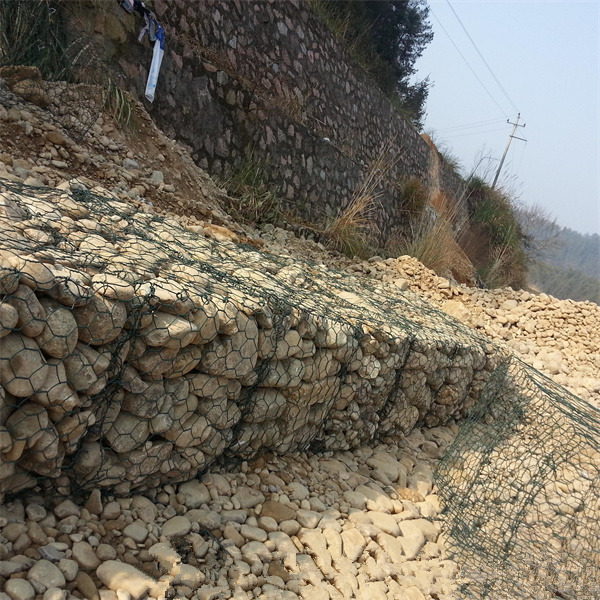Avq . 10, 2024 01:45 Back to list
Detailed Guide on Choosing the Best Gabion Wall Cladding Solutions for Your Project
The Best Gabion Wall Cladding Detail A Comprehensive Guide
Gabion walls have gained immense popularity in modern landscaping and civil engineering due to their sustainability, versatility, and aesthetic appeal. Traditionally viewed as merely functional structures, gabion walls have evolved into beautiful design elements that enhance outdoor spaces. This article will delve into the best gabion wall cladding details, highlighting their benefits, construction techniques, and design considerations.
Understanding Gabion Walls
Gabion walls are made up of wire mesh cages filled with rocks, gravel, or other durable materials. These walls are renowned for their ability to control erosion, manage water drainage, and provide structural support. Gabions have been used for centuries, with ancient civilizations utilizing them for fortification and riverbank stabilization. In contemporary settings, they serve a dual purpose providing structural integrity while contributing to aesthetic landscaping.
Benefits of Gabion Wall Cladding
1. Sustainability Gabion walls are often made with natural stones, promoting ecological balance. They allow for drainage, minimizing issues related to erosion and water accumulation. This permeability helps maintain the natural flow of groundwater, resulting in less environmental disruption.
2. Versatility Gabion walls can be designed to fit various landscapes. They can be used as retaining walls, fencing, garden edges, or simply as decorative features. The variety of materials used in the cages also means that the aesthetic outcome can be tailored to fit different design preferences.
3. Cost-Effective Constructing a gabion wall can be more affordable than traditional walls. The materials used for filling can often be sourced locally, reducing transportation costs. Furthermore, the installation process is relatively straightforward and does not require extensive machinery or labor.
Construction Techniques
Creating a gabion wall involves the following steps
best gabion wall cladding detail

1. Planning Before construction, it’s vital to plan the wall's design and layout. Consider the purpose of the wall, local climate conditions, and soil stability. This planning phase will determine the size, shape, and materials necessary for the wall.
2. Foundation Preparation A solid foundation is crucial for the longevity of a gabion wall. Clear and level the ground where the wall will be installed. Depending on the height and load the wall will bear, a concrete base may be necessary.
3. Building the Wall Wire cages are assembled on-site, filled with chosen stones or materials, and stacked to form the wall. It’s essential to maintain uniformity in filling to ensure structural integrity. Walls should be built from the bottom up, ensuring that each layer is stable before adding more weight.
4. Cladding Design For aesthetic appeal, various cladding options can be integrated. Natural stones, decorative elements like driftwood, or even metal can be added to the exterior of the gabion. These elements can enhance the overall look while maintaining the wall's primary function.
Design Considerations
When designing a gabion wall, consider the following factors
- Size and Scale Ensure that the wall's scale is appropriate for the surrounding landscape. A small garden may require a low wall, whereas larger properties can accommodate taller structures.
- Material Selection Choose stones or materials that complement the local environment. This selection helps the wall blend seamlessly with its surroundings.
- Landscape Integration Gabion walls work best when integrated into the broader landscape. Consider incorporating plants or other features that soften the wall’s appearance and enhance its natural aesthetic.
In conclusion, gabion wall cladding offers a unique blend of functionality and beauty. With their sustainable nature, versatility, and cost-effectiveness, they are an excellent choice for enhancing outdoor spaces. By carefully considering construction techniques and design aspects, homeowners and landscapers can create stunning gabion walls that stand the test of time, both structurally and aesthetically.
-
Why PVC Coated Gabion Mattress Is the Best Solution for Long-Term Erosion Control
NewsMay.23,2025
-
Gabion Wire Mesh: The Reinforced Solution for Modern Construction and Landscape Design
NewsMay.23,2025
-
Gabion Wall: The Flexible, Seismic-Resistant Solution for Modern Landscaping and Construction
NewsMay.23,2025
-
Gabion Wall Solutions: The Durable, Decorative, and Affordable Choice for Every Landscape
NewsMay.23,2025
-
Gabion Basket: The Durable and Flexible Alternative to Traditional Retaining Walls
NewsMay.23,2025
-
Gabion Basket: The Proven Solution for Slope Stability and Flood Control
NewsMay.23,2025
-
Versatility of Chain Link Fence Gabion
NewsMay.13,2025






